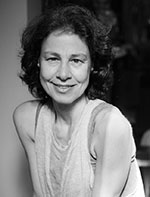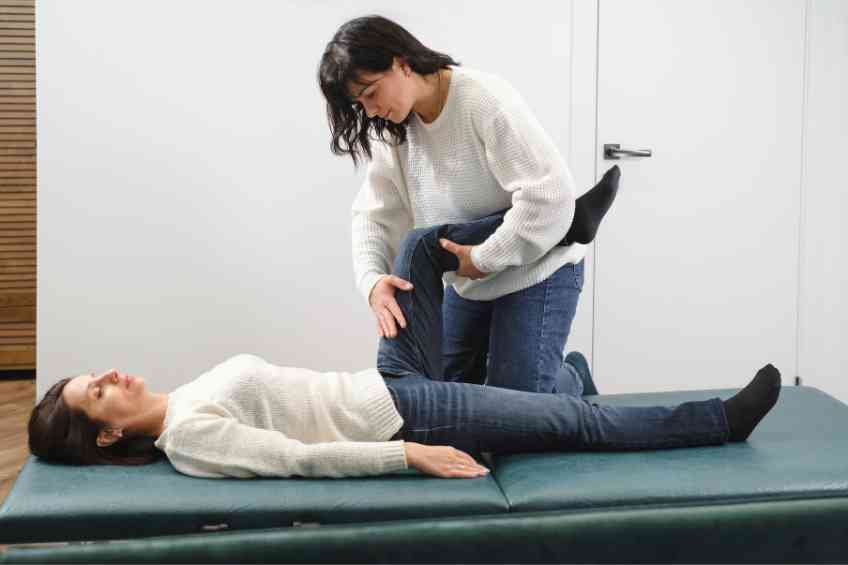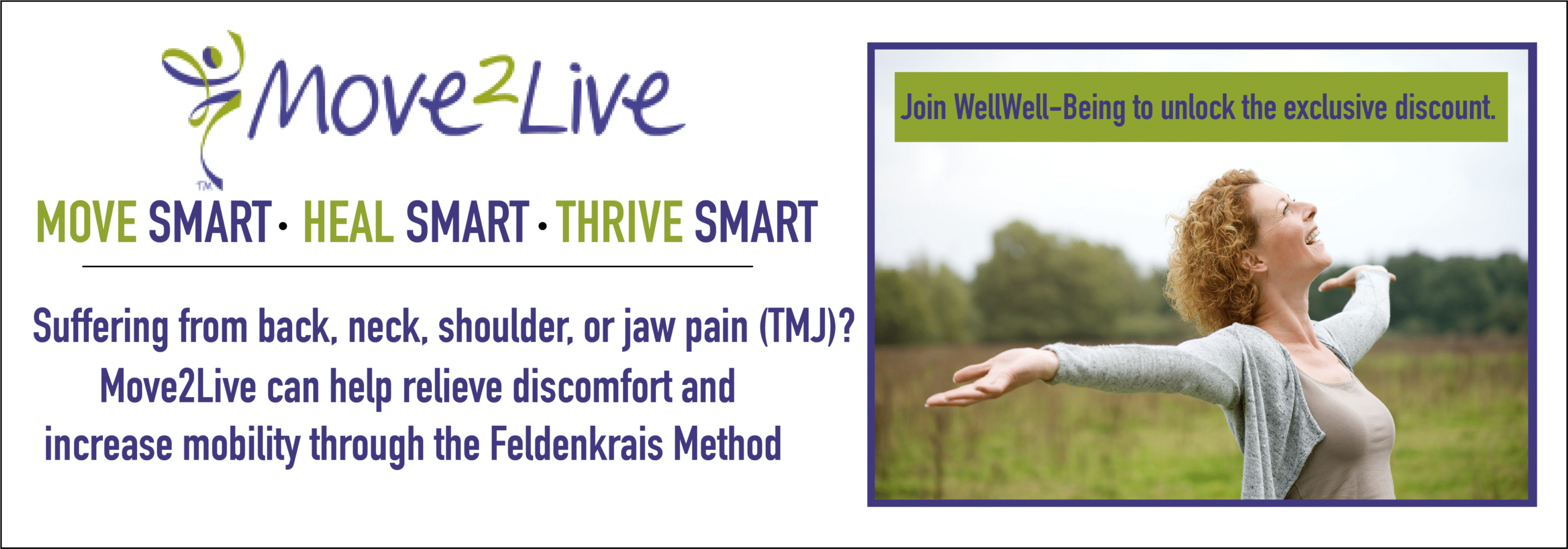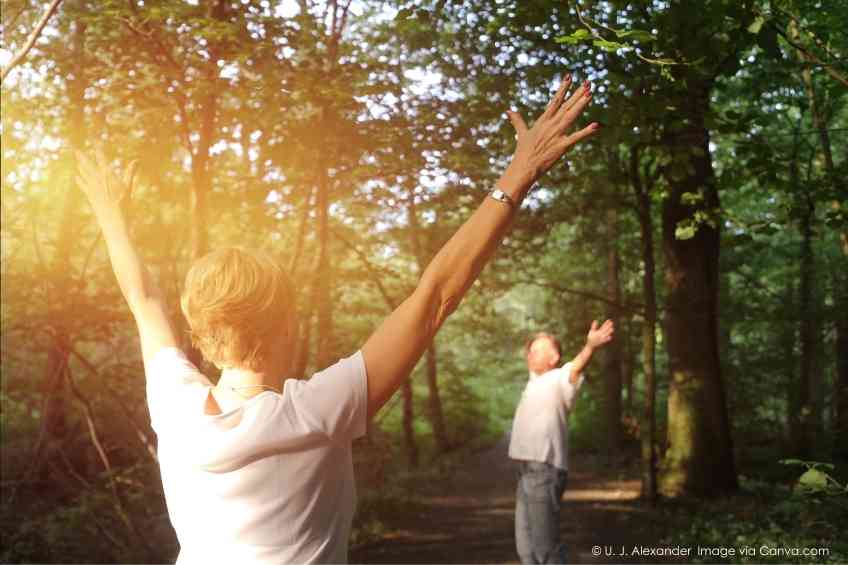Remaining physically active is one of the most important but challenging things older adults can do. Moving about is not only essential for their mental health, but it is also critically important for their physical well-being. Unfortunately, staying active isn’t easy for mature adults. Age, injuries, discomfort, bad habits and a tendency to become more sedentary as years roll on all play havoc with mobility and balance. This unsettling slowdown into inertia can be seen as normal and is almost unavoidable. It doesn’t have to be, at least according to Suzanne Ausnit. As a certified Feldenkrais practitioner and founder of Move2livenow.com, she is convinced that this gentle mind-body approach can enhance mobility, build balance and ease pain no matter a person’s age or challenges. She recently stopped by WellWell to lay out why staying active is important and how to go about it. Read on.
How important is it for mature adults to stay active? Why?
Well, you’ve heard the old adage move it or lose it. It’s pretty basic, and that’s true at any age. But especially as you get older because all kinds of other problems happen. You lose muscle mass and bone strength. And the fear of falling is huge, so balance is very important. It’s also important to maintain your independence as you age. For example, if you can’t get up and down from a chair, think what that means in terms of getting up and down from the toilet or getting up and down from the floor. If you lose them, you lose your independence and things don’t end too well.
What are the best ways for adults over 50 to stay active?
If I had to choose one thing, I would say walking is probably one of the most important things you can do to stay active because everybody can walk. One thing to remember is that you don’t have to walk three or four miles in one go. You can walk half a mile and a quarter of a mile as long as you get a healthy workout throughout the day. It could be just going up and down the stairs a couple of times a day. There are all these little things to remain active on a very basic level.
Are weights still an option?
Weights are excellent, but light weights. It depends on how you do the weights because you can injure yourself, even doing very light weights. The Feldenkrais method, which I practice, is a somatic practice that means mind-body helps you move better. It doesn’t matter what you do, you should pay attention to the ‘how’ rather than just the movement itself. ‘How’ do you get up from a chair? ‘How’ do you turn around in bed? Most people just do it. If we have to think about how we do every single thing we do, we’d never get anything done. If you go back to how babies learn to move, they do things hundreds of different ways, and it’s those hundreds of different ways that feed the brain. In the Feldenkrais method, we teach people all these different possibilities. It’s about brain plasticity with all these alternatives. The brain comes up with a better way of movement.
Why would someone come to you? Is it a matter of injury? Is it a matter of increasing flexibility or strength or a combination of those?
Older adults come to me for a variety of reasons. One is pain. Some people have chronic pain and don’t know how to get rid of it. They tried physical therapy and other modalities, like acupuncture or therapeutic yoga, but it didn’t work. We have methods to help people with chronic pain, whether through the breath, incredibly gentle hand movements or eye movements. The problem is they lose suppleness as they age. Even if they’re very active; they tend to stiffen up. The Feldenkrais method not only helps you stay supple, but it also helps reorganize so that you move in a better way. If you practice this regularly, it makes you more resilient.
Feldenkrais is not an exercise method in and of itself. It’s more of a mechanism to get your body aligned and in shape, correct?
It’s a learning modality. We’re re-educating the brain, but not by saying you can’t do this or have to do this. These very gentle moves encourage you to pay attention to how you move. It could be as simple as lying on the floor and lifting your shoulder. We might focus on whether you can lift your shoulder and how you lift it. You’re lifting your right shoulder, but do you do that with tension? Do you contract your jaw as you lift your right shoulder or are your eyes looking in the wrong direction? For example, if you lift your right shoulder, what should happen is the head should gently move a little bit to the left, but with many people, it might turn to the right. It might not move at all. By guiding people to pay attention to how they move, they start sensing all these different options and possibilities and they start moving more effectively.
Feldenkrais can be taught verbally as a class or it can be taught on a table where the practitioner will gently lift the shoulder and look and see what happens. They’ll try to figure out if the jaw is not moving or if the eyes are going in a different direction. Is somebody so contracted that they’re constantly holding their belly in? There are so many possibilities, and we don’t assume that it’s any one thing. That’s what’s very different about the Feldenkrais method compared to other modalities. We play. In the process of playing on the table or floor, we pay attention to how people move. Things begin to change in the brain, and it’s not about the movement itself; it’s about the attention to the movement. That’s what makes this somatic practice so different from other modalities.
Can stiff people, people who have an injury or are in pain identify why that pain is occurring and how to relieve that pain entirely?
Yes, you have culprit and victim. So, something is hurting, but it’s not because your knee is hurting. The problem could be coming from the ribs being unable to move freely. It could be anything. The process helps people become aware of all these different things. We don’t tell people this is incorrect or correct. We have them explore different possibilities and different approaches to movement, whether it’s with my hands as a practitioner or whether they’re sensing themselves. The most important thing is to teach people how to sense themselves. That’s what babies do. It’s based on how babies learn. Babies sense. It’s all about sensation. They learn to turn over and lift their head or they learn to walk. They try millions of different ways until something works. We lose that as we age.
Look at all these young people constantly with their heads down, looking at their phones. What does it do to the neck? What does it do to the shoulders? It creates all kinds of problems. What we would do is give people different options. Is there a different way of looking at your cell phone? How could you do it without being in the position that’s creating problems?
Why is it that most people haven’t heard about Feldenkrais? Why aren’t we more aware of Feldenkrais and what it can do?
It’s a marketing problem. It’s hard to describe the Feldenkrais method and that’s part of the problem. It’s a somatic movement modality, and it’s experiential. You have to experience it to understand it and it’s not for everybody. Two things you need to have to use the Feldenkrais method. You need curiosity and the ability to pay attention. A lot of people don’t have that sustained ability to pay attention, and they are not interested in developing it. You have a lot of people who are not curious. But if you have those two elements, that’s all you need to benefit from the Feldenkrais method.
Is it gentle?
Yes, it’s a gentle movement. You’re always looking when you do a movement. Could you make this movement easier? Could you do this movement with a little effort or smoother as you learn to detect it is creating tension? What happens if I change my attention to someplace else? For example, we go back to simply lifting the right shoulder off the floor. What happens instead of lifting the right shoulder if you press the left shoulder back into the floor? If you press your left shoulder back into the floor, you feel the right shoulder lifted. We change our attention constantly. The whole body is involved. It’s never just one thing.
Does it differ from person to person since everybody has their unique and bad quirks?
Yeah, everybody has their habits. From a teaching point of view, that’s what makes it so fascinating because nobody’s the same. Every person has different habits. You have to be very creative in finding different movement options for everybody.
What issues do you tend to deal with, injuries, soreness, loss of balance?
Well, there are all those issues, so it just depends. Back pain is a huge problem for many older adults because they’re too sedentary. If you sit a lot and sit in a way that is not conducive to your spine, then you get back pain. But if you were to move and get up every 10 minutes, even if you walk around your apartment, that will make a difference. Back pain is something I see a lot. People get stiff as they get older. Just doing some Feldenkrais movements every day, even if it’s just for 15 minutes, can make an amazing difference.
Are there barriers to engaging the Feldenkrais method as you get older?
None at all. The Feldenkrais method can be done sitting in a chair. We have chair lessons. You could also do it lying in bed if you have serious issues. Generally, in classes, it’s either done on the floor or at a Feldenkrais table. There are no barriers to doing the method. You have to remember it’s somatic, it’s mind-body. It’s not just exercising. What’s tough for people to understand is that it forces you to slow down and pay attention. Most of us are so used to doing things quickly that we don’t know how to slow down. It goes against what we do. When you have a habit, you do it and don’t think about it. Slowing down and paying attention does something neurological to the brain.
Any advice on what people should or shouldn’t be doing as they age in terms of physical activity?
I’d say walking, choosing to do stairs instead of taking the elevator. I’m a Feldenkrais practitioner, so I see doing gentle movements and paying attention is critical as you age. Ultimately, keep moving, but attend to the how of the movement. That’s where the Feldenkrais method can help you. For chronic pain, it can make a huge difference psychologically. It can relax the whole system.

About Suzanne Ausnit
Suzanne Ausnit is a former journalist, who has spent thousands of hours training to become a certified yoga teacher, Feldenkrais practitioner and ChildSpace practitioner. She is also the founder of Move2LiveNow, which focuses on helping people of all ages cultivate better body mechanics through customized solutions that draw on her extensive experience. The aim is to help individuals of all ages re-educate their bodies and brains so they can move more effectively in a pain-free manner.
Please visit Move2livenow.com to learn more.













